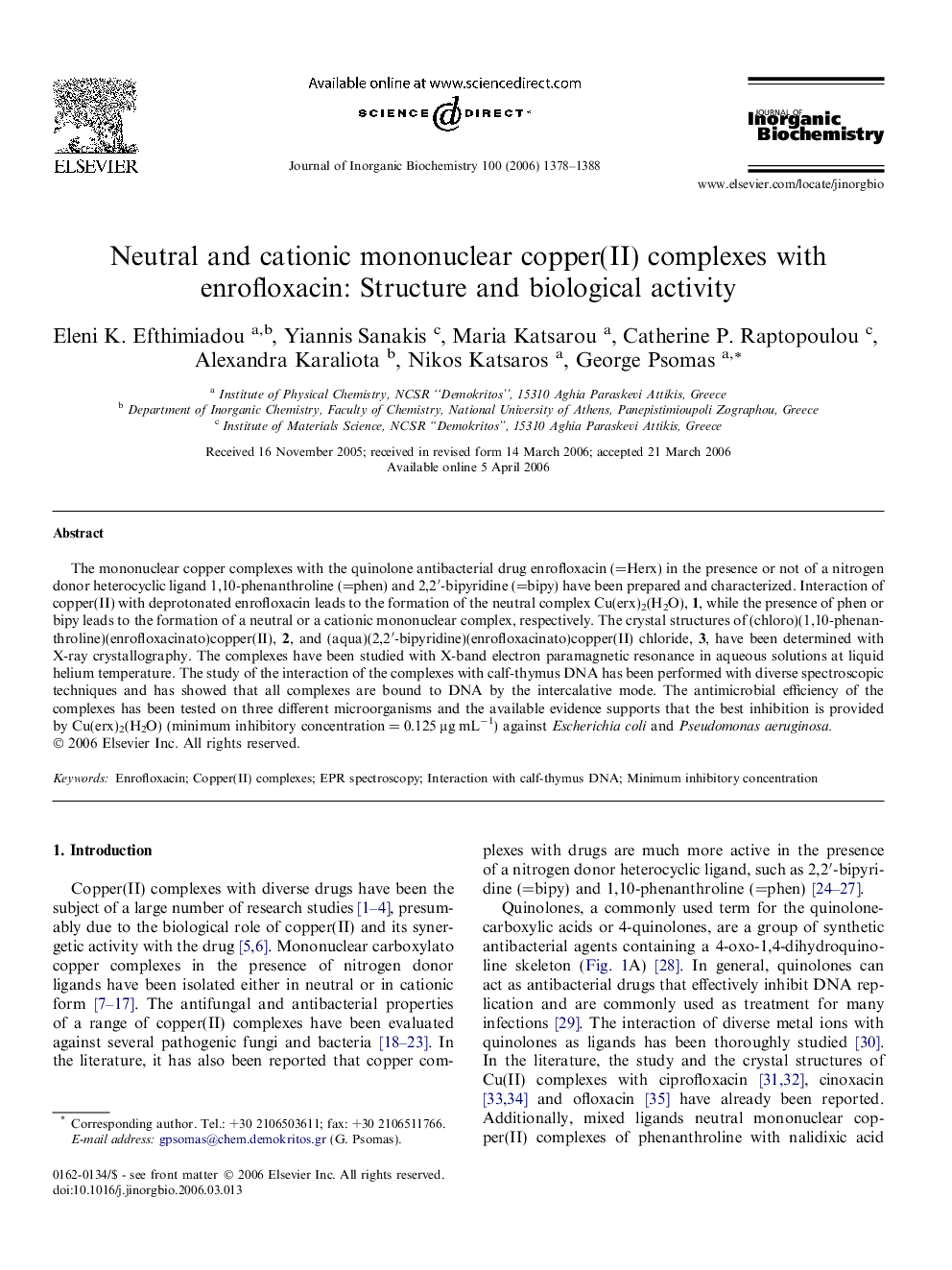| Article ID | Journal | Published Year | Pages | File Type |
|---|---|---|---|---|
| 1316640 | Journal of Inorganic Biochemistry | 2006 | 11 Pages |
The mononuclear copper complexes with the quinolone antibacterial drug enrofloxacin (=Herx) in the presence or not of a nitrogen donor heterocyclic ligand 1,10-phenanthroline (=phen) and 2,2′-bipyridine (=bipy) have been prepared and characterized. Interaction of copper(II) with deprotonated enrofloxacin leads to the formation of the neutral complex Cu(erx)2(H2O), 1, while the presence of phen or bipy leads to the formation of a neutral or a cationic mononuclear complex, respectively. The crystal structures of (chloro)(1,10-phenanthroline)(enrofloxacinato)copper(II), 2, and (aqua)(2,2′-bipyridine)(enrofloxacinato)copper(II) chloride, 3, have been determined with X-ray crystallography. The complexes have been studied with X-band electron paramagnetic resonance in aqueous solutions at liquid helium temperature. The study of the interaction of the complexes with calf-thymus DNA has been performed with diverse spectroscopic techniques and has showed that all complexes are bound to DNA by the intercalative mode. The antimicrobial efficiency of the complexes has been tested on three different microorganisms and the available evidence supports that the best inhibition is provided by Cu(erx)2(H2O) (minimum inhibitory concentration = 0.125 μg mL−1) against Escherichia coli and Pseudomonas aeruginosa.
